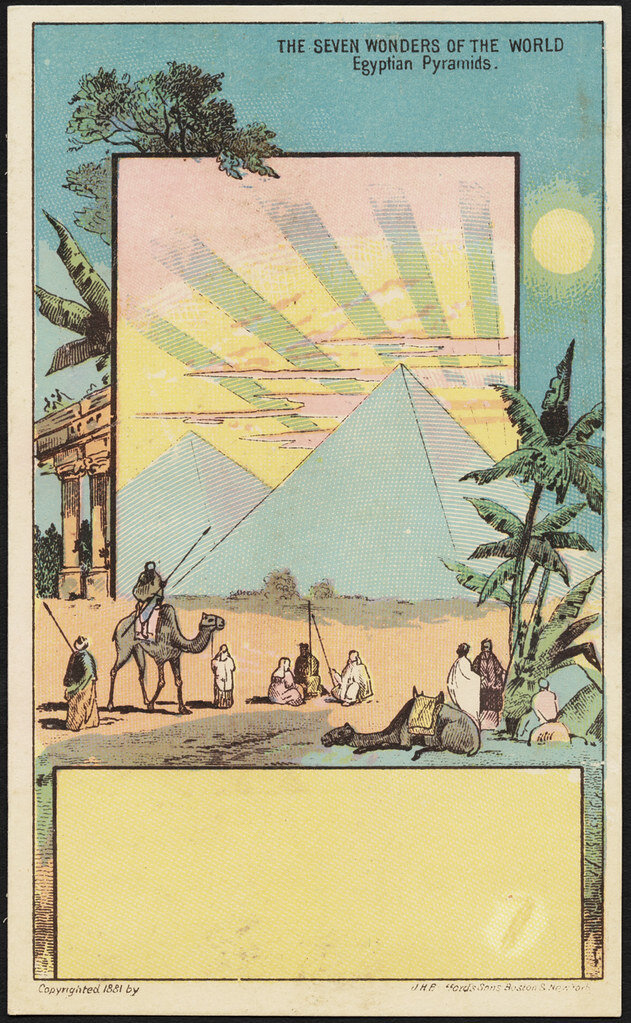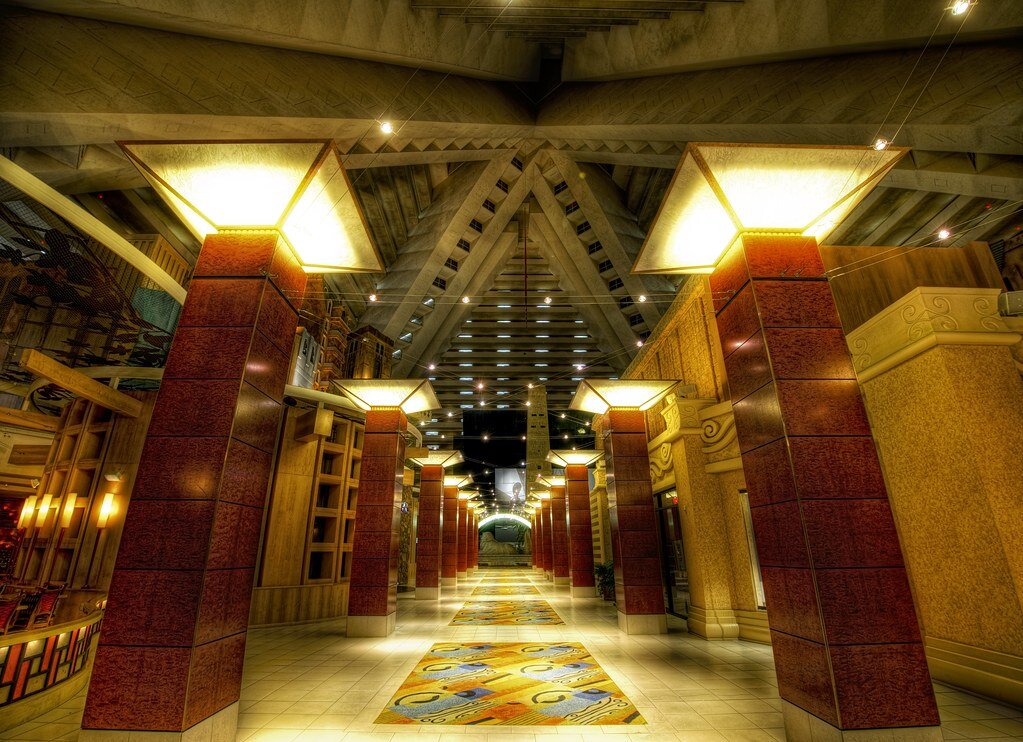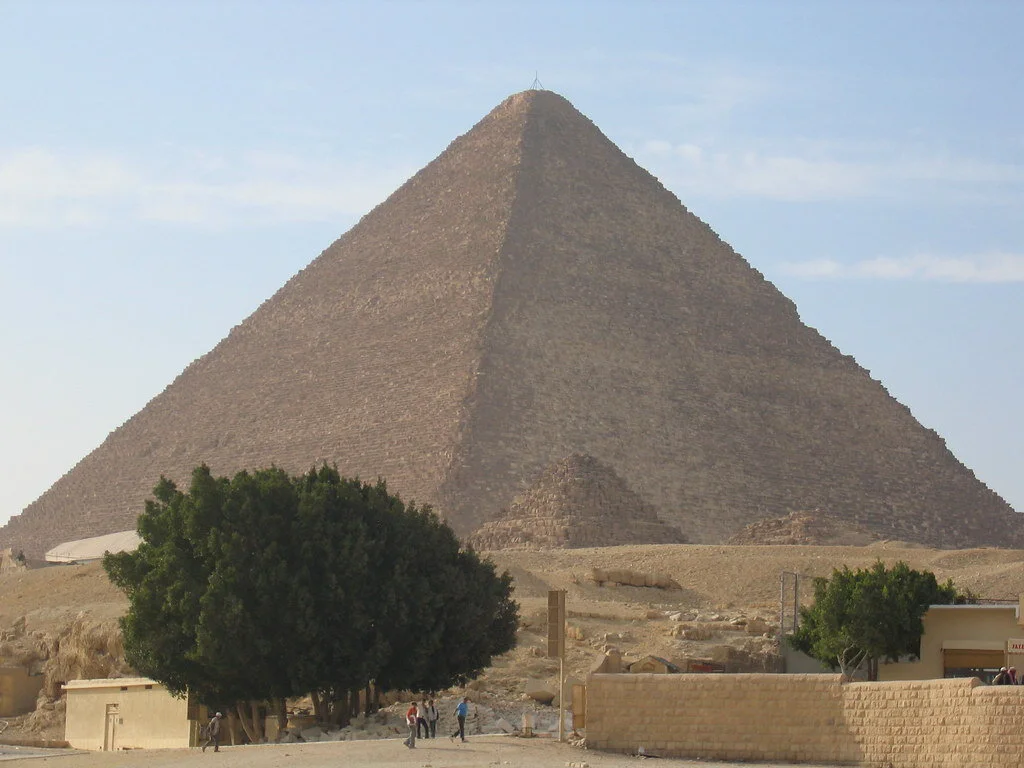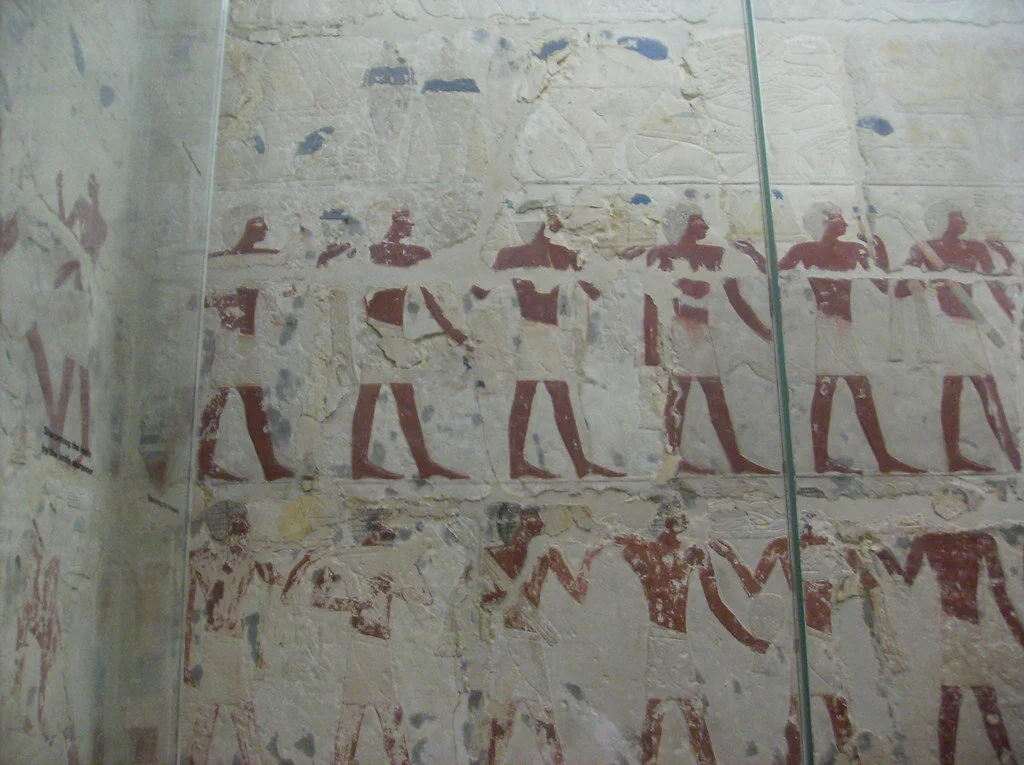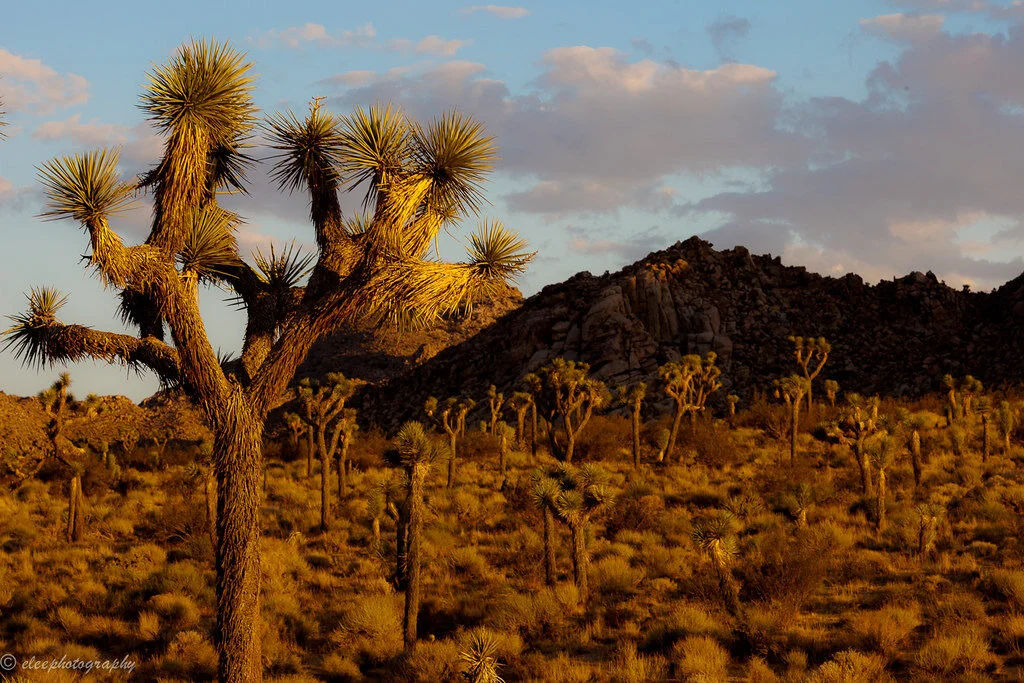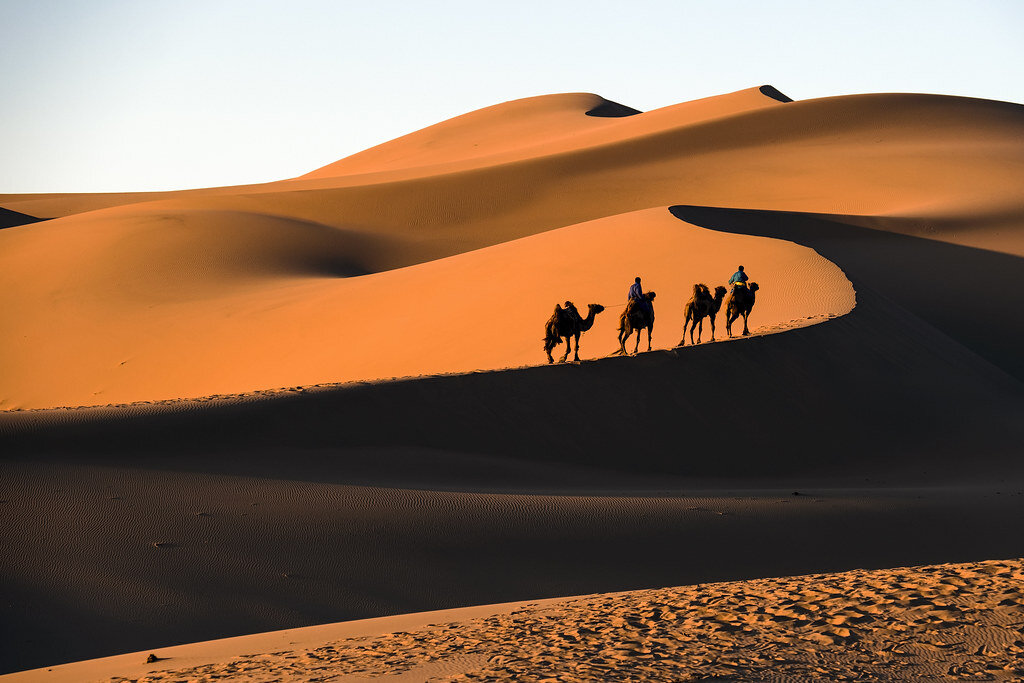For Ties van der Hoeven, the desert isn’t a symbol of emptiness but of hope.
Read More6 Interesting Facts about the Egyptian Pyramids
There is still so much we don’t know about the history and structure of the Egyptian pyramids. Here are six things that you may not have known about the pyramids and ancient Egypt.
Egyptian pyramids in the sunset. Club Med UK. CC BY-NC 2.0.
The Egyptian pyramids are famous for their buried mummies and treasures, but there are still many secrets waiting to be uncovered about their history. Take a deep look into the ancient pyramids’ past with these six interesting facts.
The seven wonders of the world, Egyptian pyramids. Boston Public Library. CC BY 2.0.
1. Once upon a time, they sparkled.
According to research on ancient texts and found evidence, it is thought that the Great Pyramid of Giza used to shine like glass and sparkle in the sunlight. Ancient Egyptians even called the pyramid “Ikhet,” which translates to “glorious light.” This is mainly because the pyramid was originally covered in polished limestone which reflected light like a mirror and made the pyramids visible from anywhere nearby. What is even more interesting is that the speed of light—299,792,458 m/s—are also the exact coordinates of the Great Pyramid of Giza, which is at 29.9792 degrees north, 31.1342 degrees east. Spooky? Definitely.
Entering the pyramid. Trey Ratcliff. CC BY-NC-SA 2.0.
2. Many of them were robbed.
A lot of the unknown history of the pyramids can be blamed on tomb robbers. Tomb robbing was a serious problem in ancient Egypt because robbers targeted the tombs for looting—even Kings’ tombs were broken into. It was the Egyptian belief that everything buried with you was taken into the afterlife, so Kings and Queens were buried with unimaginable amounts of riches. It was also very common for people to steal from their ancestors’ tombs —some even dumped the body and stole the sarcophagus. Egypt was a cashless society until the Persians came in 525 BCE, so those who stole from the tombs would have had to trade their stolen goods to higher, corrupt officials. Those caught would be executed for the offense.
The Great Pyramid of Cheops. Boston Public Library. CC BY 2.0.
3. We still don’t know how they were built.
Although the pyramids are over 4,000 years old, professionals still don’t understand how the ancient Egyptians managed to build the pyramids without advanced technology. The most accepted theory is that they used ramps to bring materials to the top, which has been proven by a recent discovery. Researchers in Egypt discovered a 4,500-year-old ramp used to haul alabaster stones out of a quarry. The ramp system dates back to Pharaoh Khufu, who built the Great Pyramid of Giza. However, the way in which the ancient Egyptians built the pyramids is still a mystery because the pyramids were not made of alabaster, which is what the discovered ramp helped to move.
Khufu’s Great Pyramid. Bernt Rostad. CC BY 2.0.
4. There is a secret chamber in the Great Pyramid of Giza (Khufu’s Pyramid).
Weighing in at 5,750,000 tons, the Great Pyramid is simply a feat of architecture. To add further to the mystery, a previously unidentified chamber in the Great Pyramid was discovered in 2017 when physicists used the by-products of cosmic rays to reveal an at least 100-foot long void. The mysterious space’s dimensions are similar to the pyramid’s Grand Gallery, which is the corridor that leads to the burial chamber of Pharaoh Khufu. What lies within the space is still unknown, as well as its purpose. Scientists hope to find out more about this newly discovered area and what it was used for.
Tomb of Perneb, carving of offering bearers. Peter Roan. CC BY-NC 2.0.
5. It was tradition for the living to share food with the dead.
Ancient Egyptians believed that tombs were eternal homes for the mummified bodies and the ka spirits that lived within them. Each tomb had a tomb-chapel where families and priests could visit the deceased and leave offerings for the ka, while a hidden burial chamber protected the mummified bodies from potential harm. Visitors offered food and drink to the dead daily, and once the offerings were consumed by the ka, the living were free to eat and drink their offerings. The Beautiful Feast of the Valley was an annual festival of death and renewal where families spent the night in the tomb with their ancestors and feasted with them in celebration of their lives.
A statue ofNefertiti in the Altes Museum in Berlin. George M. Groutas. CC BY 2.0.
6. Egyptian women and men had equal rights.
In ancient Egyptian times, men and women of the same social class were treated as equals in the eyes of the law. Women could sell, own, earn, buy and inherit property. If widowed or divorced, women could raise their own children. Women could also bring cases before a court. Overall, women could legally act on their own and were responsible for their own actions. Although everyone in ancient Egypt was expected to marry, wives still had an important, equal and independent role in their marriage.
Isabelle Durso
Isabelle is an undergraduate student at Boston University currently on campus in Boston. She is double majoring in Journalism and Film & Television, and she is interested in being a travel writer and writing human-interest stories around the world. Isabelle loves to explore and experience new cultures, and she hopes to share other people's stories through her writing. In the future, she intends to keep writing journalistic articles as well as creative screenplays.
Egyptian Activist Brings About a #MeToo Moment
Nadeen Ashraf, creator of the Instagram page “Assault Police,” warned fellow women about men accused of sexual assault. Now, she is working to change the society that produces the perpetrators.
Nadeen Ashraf has received more death threats than she can count. Her infamy began with an Instagram page named “Assault Police” and culminated in a nationwide movement. It broaches a taboo subject in Egyptian society: sexual violence. The Instagram page provides women an outlet to express their stories of sexual assault and harassment while giving guidance on how to navigate Egyptian society as a survivor. The threats received by Ashraf demonstrate the opposition that activist women face. It also shows how necessary Egypt’s #MeToo moment is.
Ashraf joins a worldwide cadre of young activists who use social media to promote inclusivity. At 22 years old, she belongs to the first generation that was born and raised with social media. “I’ve been active on social media since I was 9 years old,” Ashraf said in an interview with Egyptian Streets, “and I’ve been an avid follower of internet trends and social media for as long as I can remember.” This gives her an edge in crafting social media campaigns that reach women, old and young, across Egypt. So far, Assault Police has over 200,000 followers.
Ashraf started the account in a rage late one night. A fellow student at the American University in Cairo accused Ahmed Bassam Zaki of sexually harassing and blackmailing women on social media, but within days, the post disappeared. This was one of many instances. “I witnessed women first coming forward about being harassed by him on our university’s unofficial Facebook group around 2018, only to be silenced by having their posts deleted later,” Ashraf says. She soon created Assault Police to warn other women about Zaki. From there, the growth was explosive.
Nobody predicted such widespread success, least of all Ashraf herself. “I initially expected it to get reported and shut down by Instagram within days of its creation,” she says. Such was the fate of most social media posts calling out sexual harassment. Assault Police comes, though, at a time when a new generation of young activists are using social media to advocate for societal change. Being tech savvy is necessary when authorities arrest activists on social media for “indecency” and “debauchery” while sexual predators roam free.
A protest at the University of Cairo. Hossam el-Hamalawy. CC BY-SA 2.0.
Ashraf faces an uphill battle in shifting widely held cultural norms. Though sexual harassment was criminalized in 2014, pervasive misogyny means victims of sexual abuse are rarely taken seriously. Moreover, a climate of stigma and shame deters many victims from accusing their aggressor publicly. Roughly 75% of men—and 84% of women—believe a woman who dresses provocatively deserves to be harassed.
“My generation often takes credit for jump-starting change all over the world,” Ashraf said, “but I kept seeing this gap within my community of young women trying to speak out against sexual harassment, and never being taken seriously.” Assault Police provided one of the only venues where victims could tell their stories and seek help without bringing Egyptian society’s scorn upon them. The groundswell of support converted the fledgling account into a nationwide movement, one that is changing the conversation about sexual violence. Nevertheless, there is much work to be done.
The case of Aya Khamees demonstrates the challenges the movement faces. When Khamess first told the police she had been gang raped, they did nothing. Only after weeks of online campaigning did the authorities arrest five suspects, but the delay allowed at least two suspects to flee the country. In a Kafkaesque turn, authorities charged Khamees herself in the trial on charges of prostitution, drug use and “violating family values.” The trial is yet to be decided, but many women understood the message. Their lives would be easier if they stayed quiet.
Still, the moment represents a #MeToo moment for the country. For the first time, women sharing stories of sexual assault are being taken seriously, and men are beginning to face consequences. After Ashraf repeated accusations against Ahmed Bassam Zaki on the Assault Police page, he was arrested by authorities.
A protest against systemic sexism. Hossam el-Hamalawy. CC BY 2.0.
For the time being, Ashraf continues passionately against this misogynistic system. So far, Assault Police has been run by her alone, but facing down such a mammoth social issue requires more than one committed activist. “I want to expand from an online platform to a full-time organization,” Ashraf said, “that can support survivors in real time by connecting them to professionals, legal aid and therapy.” Assembling such a team is no easy task, but then again, nothing about Assault Police was ever easy. And look at its success so far.
Michael McCarthy
Michael is an undergraduate student at Haverford College, dodging the pandemic by taking a gap year. He writes in a variety of genres, and his time in high school debate renders political writing an inevitable fascination. Writing at Catalyst and the Bi-Co News, a student-run newspaper, provides an outlet for this passion. In the future, he intends to keep writing in mediums both informative and creative.
8 Surprisingly Vibrant Desert Destinations
Deserts are much more than the beating sun and rolling sand dunes we often picture. These eight destinations showcase the incredible natural beauty of the desert, from salt flats and chalk formations to mountains and glaciers.
Though deserts are often thought of as just hot, dry expanses of sand, they come in a variety of climates and landscapes and hold some of the world’s most fascinating natural formations. Deserts “are areas that receive very little precipitation,” making them arid but not necessarily hot and sandy. Many deserts are mountainous, and others are large expanses of rock or salt flats. Though their arid environment makes water in deserts scarce, they are far from lifeless. Plants and animals, including humans, have adapted to desert life. One-sixth of the Earth’s population lives in deserts, which are found on every continent.
These eight desert destinations range from freezing to boiling in temperature and are all unique, with their own attractions and plant and animal life. Each of these stunning deserts is worth a visit, and they may change your opinion of the desert as a stark, lonely place to one of beautiful landscapes blooming with culture, history and life.
White and Black Deserts, Egypt
Located just a few hours from Cairo, Egypt’s White and Black deserts are two stunning and underappreciated visitor attractions. The White Desert is located in the Farafra Depression, a section of Egypt’s Western Desert, and boasts some of the most unique geological landscapes in the country. Incredible wind-carved white chalk formations rise from the sand in the shapes of towering mushrooms and pebbles, giving the White Desert its name. The White Desert stretches over 30 miles, and the most visited area is the southern portion closest to Farafra. To the north of the White Desert is the Black Desert, where volcanic mountains have eroded to coat the sand dunes with a layer of black powder and rocks. In the Black Desert, visitors can climb up English Mountain and look out over the landscape. The Egyptian Tourism Authority recommends booking a tour to explore the deserts in depth, and travelers can even stay in the White Desert overnight.
Joshua Tree National Park, California
Joshua Tree National Park in Southern California is where two different desert ecosystems meet. Parts of the Mojave and the Colorado deserts are both found in Joshua Tree, along with a distinctive variety of plant and animal life. The Joshua tree, the park’s namesake, is the most identifiable of the plants, with its twisted, spindly branches and spiky clusters of greenery. Some of the park’s most popular attractions are Skull Rock; Keys View, a lookout with views of the Coachella Valley and the San Andreas Fault; and Cottonwood Spring Oasis, which was a water stop for prospectors and miners in the late 1800s. Joshua Tree National Park has roughly 300 miles of hiking trails for visitors to explore. The park is open 24 hours and can be visited at any time of the year, but visitation rises during the fall due to the cool weather and is at its height during the wildflower bloom in the spring.
Atacama Desert, Chile
Trips to the Atacama Desert in northern Chile are likened to visiting Mars on Earth. The dry, rocky terrain is so similar to that of Mars that NASA tests its Mars-bound rovers here. The Atacama Desert, the driest desert on Earth, spans over 600 miles between the Andes and the Chilean Coastal Range. Some weather stations set up in the Atacama have never seen rain. Despite its dryness, the desert is home to thousands of people, as well as plants and animals. People have been living in the Atacama Desert for centuries; mummies were discovered in the Atacama dating back to 7020 B.C., even before the oldest known Egyptian mummies. Attractions in the Atacama Desert include El Tatio geyser field, the Chaxa Lagoon, the Atacama salt flats, and sand dunes over 300 feet tall. The Atacama Desert is also said to have some of the clearest night skies in the world, making it perfect for stargazing. It is best to avoid a trip to the Atacama during the summer months, as the high temperatures make for a sweltering visit.
Salar de Uyuni, Bolivia
The world’s largest salt flat, Salar de Uyuni, covers 3,900 square miles in the southwestern corner of Bolivia. Salar de Uyuni is so large it can be seen from space and holds an estimated 10 billion tons of salt. Beneath the salt flat is approximately 70% of the world’s lithium reserves. This lithium is carefully extracted and used for powering laptops, electric cars and smartphones. Salar de Uyuni is surrounded by scenic lakes, geysers and rock formations, and is one of the world’s most beautiful and untouched natural landscapes. Tours of Salar de Uyuni take visitors to the Valley of Rocks; Morning Sun, which is home to geysers and mud pots; Colchani, a salt-processing village; and the Polques Hot Springs, where travelers can soak in warm thermal water. The landscape of Salar de Uyuni changes based on the seasons, so travelers should plan their visits around what they want to see. From July to October, access to all sites of Salar de Uyuni is unrestricted, but during the rainy season from December to April, visitors may be able to witness the salt flat’s famous mirror effect, where a thin layer of water over the salt transforms the land into the world’s largest mirror.
Tanque Verde Ranch, Arizona
Located just outside of Tucson, Arizona, near Saguaro National Park and the Rincon Mountains, Tanque Verde Ranch gives visitors “the ultimate dude ranch experience.” The ranch sprawls over 640 acres and stocks over 150 horses. Visitors to the ranch can get a real-life cowboy experience, including horseback riding and team penning. Riders of all experience levels will find something to do at Tanque Verde, where visitors can take beginning, intermediate and advanced lessons and then go on a sunrise or sunset trail ride through the Arizona desert. Tanque Verde Ranch offers kids’ riding activities too, as well as activities for non-riders such as yoga, mountain biking, fishing, swimming and pickleball. Visitors should pack long pants and closed-toe shoes if they plan to ride, and casual wear is appropriate for all non-riding times. Trips to the ranch usually last around four days, and visitors stay on the property. Tanque Verde Ranch is open to visitors year-round.
Gobi Desert, Mongolia
Spanning most of southern Mongolia and its border with China, the Gobi Desert contains stunning views and years of history. The region was once populated by dinosaurs, and some of the best-preserved fossils in the world were found near the Flaming Cliffs of Bayanzag. The Gobi Desert showcases a variety of natural beauty, from towering sand dunes to incredible white granite formations. Dry desert plants that come to life after rain make the Gobi unique, as well as ”saxaul forests” made up of sand-colored shrubbery. Visitors to the Gobi Desert should explore the Khongor Sand Dunes, an area that offers rocky and mountainous terrain in the south, dry and barren terrain in the center, and several oases in the north. Other major attractions are the Flaming Cliffs of Bayanzag, where red clay seems to glow in the sun, and the Gobi Waterfall, which looks like a city in ruins but is a completely natural formation. The best time to visit the Gobi Desert is either in late spring or in autumn, when the weather is neither too hot nor too cold.
Nk’Mip Desert, Canada
Also called the Okanagan Desert, Canada’s Nk’Mip Desert contains the most endangered landscape in Canada. Located in Osoyoos in British Columbia, the Nk’Mip Desert Cultural Center is a 1,600-acre area of the Okanagan Desert managed by the Osoyoos Indian Band, and is the only fully intact area of desert in Canada. The desert is situated in a semiarid microclimate. The cultural center was designed to be eco-friendly and resembles the traditional winter homes of the Osoyoos Indian Band. Visitors can explore the desert on walking trails, which are surrounded by sage, prickly pear cactuses and antelope brush, as well as sculptures of desert creatures and native peoples by Smoker Marchand. The trails take visitors through a traditional Osoyoos village, where they will find a traditional sweat lodge and pit house. Many visitors prefer to explore Nk’Mip Desert in the summer due to the region’s relatively cold winters.
Patagonian Desert, Argentina and Chile
The Patagonian Desert is South America’s largest desert and the seventh-largest in the world. It covers parts of southern Argentina and Chile, and is a cold desert, sometimes reaching a high temperature of 68 degrees Fahrenheit. The Patagonian Desert is home to two national parks: Torres del Paine National Park in Chile and Los Glaciares National Park in Argentina. Torres del Paine and Los Glaciares aren’t typical desert environments, but since the Patagonian is a cold desert, its landscape is different from that of most deserts. Before the Andes were formed, the Patagonian Desert was likely covered by temperate forests, so the region containing the desert, Patagonia, is extremely ecologically and geographically diverse. Torres del Paine National Park is known for its towering granite structures, which were shaped by glaciers. Los Glaciares is home to large glaciers, as well as scenic mountains, lakes and woods. The Cueva de las Manos, or “Cave of Hands,” is a series of caves in Argentinian Patagonia which are filled with paintings of hands dating back to 700 A.D., likely made by ancestors of the Tehuelche people. Tehuelche people live in Patagonia today, some still following a nomadic lifestyle. The best time to visit Patagonia is generally said to be in the summer (December to February), when the days are warm and the fauna is in full bloom, but there are merits to exploring the area at all times of year.
Rachel Lynch
Rachel is a student at Sarah Lawrence College in Bronxville, NY currently taking a semester off. She plans to study Writing and Child Development. Rachel loves to travel and is inspired by the places she’s been and everywhere she wants to go. She hopes to educate people on social justice issues and the history and culture of travel destinations through her writing.
A Look at the Nubian Pyramids of Sudan
Interested in the pyramids of Egypt… well, although lesser known, Sudan has more pyramids than its neighbor. On the eastern bank of the Nile lie 200 magnificent pyramids dating back to more than 2,300 years ago. Although less frequented for tourism, Sudan is filled with hidden treasures.
Read MoreSudanese people gathering in front of a mosque. Nina R. CC 2.0.
Sudan Separates Religion and State Following al-Bashir’s Ouster
The Northeast African nation of Sudan has made the decision to separate religion from the state, dissolving 30 years of governance by Islamic law. The country, which has been attempting to rebuild itself after long periods of colonial rule and political strife, came to this decision in an attempt to quell current tensions between religious and military groups.
Sudan was formerly under colonial rule by the United Kingdom, though the British did not make their presence in Sudan a physical one. They maintained control by partnering with Egypt through a dual colonial government known as the Anglo-Egyptian Condominium (1899–1956). This agreement separated the Muslim-dominated north from the majority-Christian south. As colonial presence grew stronger in the region, so did division along ethnic, socioeconomic, religious and linguistic lines.
Sudan was able to gain independence in 1956, but the country is still overwhelmed with tensions as its citizens and government continue to reconcile with issues caused by colonization. They eventually led to the Second Sudanese Civil War (1983-2005) between the central government in Khartoum and the Sudan People’s Liberation Army, causing an eventual 2 million deaths and the creation of an independent South Sudan. This conflict was amplified when Omar al-Bashir took office by way of a military coup in 1989 in the middle of this 22-year-long civil war. He ruled for 30 years and did so through the suppression of political opponents as well as violence against the Sudanese people. During his presidency, multiple arrest warrants were issued to al-Bashir by the International Criminal Court on charges including war crimes and crimes against humanity, such as his attacks on citizens in Darfur.
Map of Sudan. Muhammad Daffa Rambe. CC BY-SA 3.0.
Al-Bashir continued to hold his power until April 2019 when, after months of unrest, the Sudanese military toppled him. On Sept. 3, 2020, Sudan issued its declaration to sever ties between mosque and state, saying that, “For Sudan to become a democratic country where the rights of all citizens are enshrined, the constitution should be based on the principle of ‘separation of religion and state,’ in the absence of which the right to self-determination must be respected.”
Prime Minister Abdalla Hamdok. Ola A .Alsheikh. CC BY-SA 4.0.
Prime Minister Abdalla Hamdok and Abdelaziz al-Hilu, leader of the Sudan People’s Liberation Movement-North rebel group, signed this document together. Additionally, the document emphasizes its effort toward unity with the statement, “Sudan is a multiracial, multiethnic, multireligious and multicultural society. Full recognition and accommodation of these diversities must be affirmed.” More than simply separating church and state, the declaration gives the country momentum in its push toward unification.
Renee Richardson
Renee is currently an English student at The University of Georgia. She lives in Ellijay, Georgia, a small mountain town in the middle of Appalachia. A passionate writer, she is inspired often by her hikes along the Appalachian trail and her efforts to fight for equality across all spectrums. She hopes to further her passion as a writer into a flourishing career that positively impacts others.
Egyptian pyramid. Jeremy Bishop. Unsplash.
Aliens Built the Pyramids? The Perils of Mixing of Archaeology and Ethnocentrism
On July 31, Tesla and SpaceX CEO Elon Musk tweeted, “Aliens built the pyramids obv.” With almost 90,000 retweets, over 500,000 likes and 25,000 replies, theories about extraterrestrial efforts to build Earth’s architectural marvels continue to stir conversation. These debunked theories have been popularized by the TV show “Ancient Aliens,” which focuses on the supposed possibility that aliens built many of the grand structures seen today.
Elon Musk’s tweet about the Egyptian pyramids. Elon Musk. Twitter.
While the theories can be entertaining to consider, many academics and archaeologists find that this perspective erases the history of the people present when these structures were built. With regard to the pyramids, the belief that extraterrestrials deserve credit erases possible Black African history in Egypt.
Egypt’s Minister of International Cooperation replying to Elon Musk. Rania A. Al Mashat. Twitter.
Egypt’s Minister of International Cooperation, Rania al-Mashat, corrected Musk by tweeting, “I follow your work with a lot of admiration. I invite you & SpaceX to explore the writings about how the pyramids were built and also to check out the tombs of the pyramid builders.” This correction by the minister was necessary, as speculation over how the Egyptian pyramids were built can be answered by accurate historical accounts.
The belief that aliens are responsible for building structures such as the pyramids is called pseudoarchaeology and it has gained popularity on the internet. Several serious books have been written about the topic, and many of these texts have even been peer reviewed by other archaeologists. The first pseudoarchaeological book to gain widespread traction was a series of texts written by Erich von Daniken, the first of which was called "Chariots of the Gods." Thirty-two more volumes followed. Most of Von Daniken’s texts question architectural structures specifically in non-White regions like Latin America, Africa and Asia, with little speculation directed at ancient Viking or Celtic structures.
The Great Sphinx and two of the Egyptian pyramids. Museums Victoria. Unsplash.
A major problem with texts such as “Chariots of the Gods” comes from the ethnocentric bias many of them have. Rather than crediting the actual, often non-White, builders for architectural feats like the pyramids of Egypt, the assumption is that the structure is too complex for humans to understand or build. Archaeologist Eric Cline told Forbes that, “Pseudoarchaeologists cannot accept the fact that the mere humans might have come up with great innovations such as … the Sphinx all on their own; rather, they frequently seek or invoke divine, or even alien, assistance to explain how these came to be.”
Mexico’s Teotihuacan. Alejandro Morelos. Unsplash.
Questions have even been asked about the UNESCO World Heritage Site of Teotihuacan, an ancient Aztec city located near present-day Mexico City. Many pseudoarchaeologists believe the ruins could have once been a spaceport due to the presence of mica and liquid mercury in the area. This type of misinformation may be interesting, but it greatly takes away from the intricate planning necessary to accomplish such great feats of engineering.
While far-fetched theories about the past are entertainment for some, it is clearly more important to recognize the history which has already been uncovered. Theorizing without noting facts not only discounts history itself, but also greatly takes away from those who built Earth’s great marvels.
Renee Richardson
is currently an English student at The University of Georgia. She lives in Ellijay, Georgia, a small mountain town in the middle of Appalachia. A passionate writer, she is inspired often by her hikes along the Appalachian trail and her efforts to fight for equality across all spectrums. She hopes to further her passion as a writer into a flourishing career that positively impacts others.
The Nile river in Cairo. Grant Faint/Getty Images
Nile Basin States Must Build a Flexible Treaty. Here’s How..
Ethiopia, Sudan and Egypt are a step closer to resolving their disputes over the filling and operation of the Grand Ethiopian Renaissance Dam. The dam – a huge project on one of the River Nile’s main tributaries, the Blue Nile in Ethiopia – is designed to generate 6,000 megawatts of electricity. Its reservoir can hold more than 70 billion cubic metres of water. That’s nearly equal to half of the Nile’s annual flow.
Filling the immense reservoir will diminish the flow of the Nile water.
Tensions have been particularly acute between Egypt and Ethiopia because more than 80% of the water reaching Egypt comes from the Blue Nile.
Despite decades of concerted effort, no comprehensive deal between all 11 countries that share the Nile’s river basin has ever been reached. But, after rigorous discussions in the US, Ethiopia, Egypt and Sudan issued a joint statement that lays the framework for a final agreement. The three countries agreed that the dam would be filled in stages, and that it would only take place in the wet season.
The framework also underscored the need for any agreement to be open to changes. This is important because the three countries must consider changes in weather patterns, among other factors, while developing the final draft.
Instead of allocating the Nile waters based on the assumption of a fixed, and often too optimistic, perpetual water supply, Ethiopia, Sudan, and Egypt should do it in accordance with the social, economic and changing weather conditions in the Nile basin.
This is extremely important as existing studies and climate change models commonly predict potential changes in weather patterns and temperature.
Changing weather patterns
Studies suggest that there is likely to be an increase in the basin’s average annual temperature. This would lead to greater loss of water due to evaporation. Changes are also expected in the future rainfall, river flow and water availability in the Nile Basin, although there’s less certainty about these.
But there’s enough evidence to point to the need for flexibility around agreements on how the dam will be filled. For example, there must be allowances to respond to scenarios of increased water availability and flooding, or water scarcity and drought.
Building flexible and resilient legal and institutional arrangements into the new treaty is therefore key. These include drought provisions, flexible allocation strategies, amendment and review procedures, termination clauses and recognised river basin organisations.
Flexibility in watercourse treaties, due to the unknown effects of climate change, has been recommended by leading scholars in the field such as Stephen McCaffrey and Itay Fischhendler.
Drought provisions
Drought provisions are a common way to improve the flexibility of treaties. Ethiopia, Sudan and Egypt can include special provisions that allow for exceptional circumstances, like severe drought.
To deal with the hardships of the projected extreme drought years, the three countries will need to build more reservoirs and storage capacity. But given the tension the dam has caused, finding agreement on this is likely to be challenging. This is all the more reason to include specific clauses in the treaty about storage.
There should also be flexibility in how much water is allocated, instead of a fixed amount. There are a couple of ways this can be achieved.
A simple way is to require Ethiopia to deliver a minimum flow to Sudan and Egypt to maintain human health and basic ecological functions.
The other option would be a percentage allocation. This would share possible water deficiencies, and surplus, proportionally among the three countries. Each country would get its agreed share of the total in a given year.
This would be the better option because it would respond to both wet and dry conditions.
Amendments and reviews
To make the treaty flexible, it’s also important to provide for amendments and reviews of processes. In this way countries could address unforeseen circumstances.
For instance, Ethiopia promised, under the joint statement, that it will fill the dam’s reservoir during the wet season, generally from July to September. But the wet and dry seasons could change.
The treaty can establish what might “trigger” adjustments or have set times for when a review should occur.
It must also have a termination clause which allows any riparian state to terminate the agreement, with a notice period.
River basin organisations
Managing water across boundaries needs river basin organisations. These are entities entrusted to manage water resources at the basin scale. They’re important because they can help introduce a level of flexibility in the arrangements between the riparian states.
A good example of how this can be done is the role played by a river basin organisation charged with applying the 1944 Colorado Treaty. The organisation was composed of an engineer commissioner from both parties – the US and Mexico – and was able to adapt, amend and extend institutional arrangements, including the main treaty.
In the case of the Nile basin, Ethiopia, Sudan and Egypt have two options.
They can establish a joint body in the treaty that will manage the operations of dams in their respective countries. But this would exclude the other eight Nile riparian countries.
The other, and arguably better, option is to manage all dams through the Nile Basin Commission – an organisation envisaged in the Cooperative Framework Agreement. This was an attempt by riparian states to prepare a basin-wide framework to regulate the inter-state use and management of the Nile River. All the Nile basin states except Egypt and Sudan agreed to it.
This organisation has a wide range of powers, which include the ability to examine and decide how water is best used and distributed. Egypt and Sudan must accede to the framework agreement. And the treaty must empower the body to manage the filling and operation of the dams and reservoirs in the three countries.
Mahemud Tekuya is a JSD/Ph.D candidate, University of the Pacific
THIS ARTICLE WAS ORIGINALLY PUBLISHED ON THE CONVERSATION
EGYPT: Sahara Sandscapes
This is an impression of our Squiver Photo Tour to Egypt. It will take you to the magical Western Desert and White Desert of Egypt, with hauntingly beautiful landscapes, incredible rock formations, endless views and high mountains.
Escape from Egypt
This short film encompasses 21 days in Egypt. Ancient Egypt was a civilization in North Africa, concentrated along the lower reaches of the Nile River. Now present day Egypt covers the same area. The locations shown in this video are Cairo, Giza, Luxor, Aswan, Alexandria, and Ossis Siwa.


